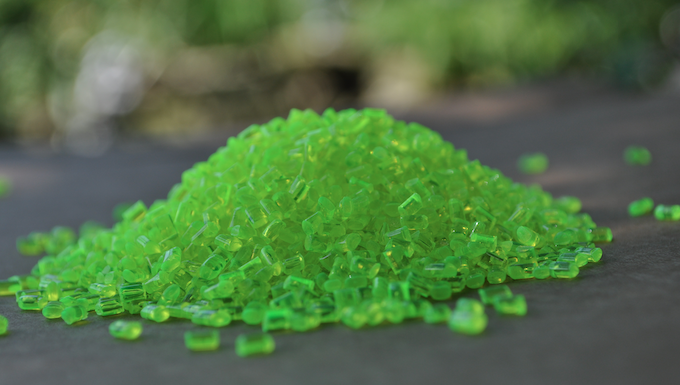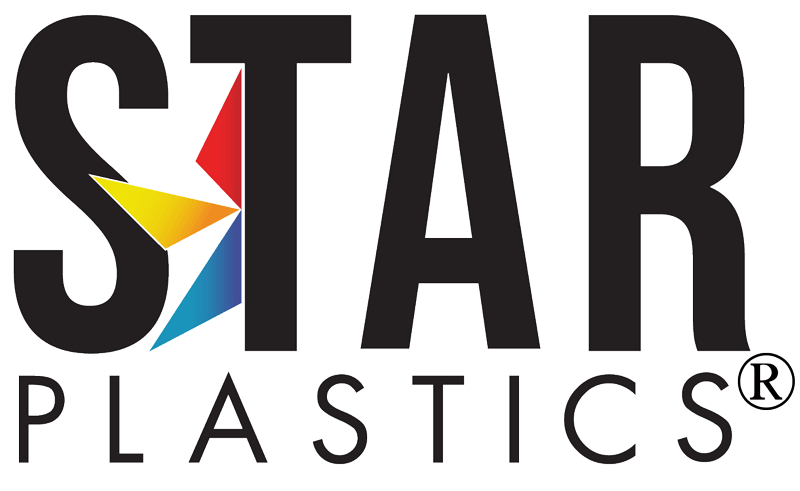News
Recycled Content Solution to Meet Sustainability Initiatives

Recycled content is often portrayed as lesser quality material or a cheap solution. With many cheaper solutions, you get what you pay for. Star Plastics dives into the misconceptions, concerns and common questions consumers and manufacturers may have about recycled content and meeting sustainable goals.
What is Recycled Content?
Recycled content can be any material that has been diverted from a solid waste stream. That means material either having completed its life as a consumer item, recovered from waste destined for disposal and processed (post-consumer), or material diverted or reclaimed during a manufacturing process (pre-consumer or post-industrial) that would otherwise be collected and seen as solid waste.
The Quality, Performance and Ideal Applications for Recycled Content
With a baseline understanding of what recycled content is, when can it be used? How effective is it? Recycled content has a perception problem, as many have built up the stereotype that it is not of the same quality. Historically, recycled products have been pigeonholed as low quality, low-cost and less capable of high performance. While material such as this does exist and typically goes into dunnage-like applications, it is the exception, not the rule.
In terms of what applications are the most ideal for the use of recycled content, it depends on the recycled content grade and material type. When pre- and post-consumer recycled materials are tested, qualified and understood, a large majority of it can be used in formulations for a variety of products. For example, an engineering-grade recycled-content product line like ReStart, which is a high-performance line of Polycarbonate, ABS, PC/ABS materials, can be used in place of prime compounded resins in many applications. When the recycled materials are formulated appropriately, they can be used in applications where prime resins have been used in the past. Especially with the use of additives like UV, FR, and Release, these materials achieve application performance requirements in electronics, recreational items, household appliances, lawn and garden, etc.
How Does Material with Recycled Content Compare to Prime?
If recycled content is viewed as a viable and versatile option, then how does it compare with prime? Is it similar in quality? The answer is with the right expertise and experience, recycled content materials can be in direct competition of prime. Recycled materials, when combined with other feedstock, can be formulated to maintain the high standards required of high performance applications. For example, the Star Plastics ReStart product line, which contains 35%-50% recycled content, has products that are UL recognized. This means these recycled-content products meet specific performance requirements and are certified by an outside agency to do so.
This type of like-prime performance does require extensive knowledge and experience in testing and product-development, which adds value and cost. However, it is important to understand what you are paying for. The added cost comes from not only the specific testing and processing that recycled materials require, but the expertise in formulating and compounding it. Value-added recycled-content compounded materials create a win-win situation for consumers—they get the sustainable option they want that supports the product, application, and performance they need. And when it comes to how plastics affect the environment, using recycled content materials helps to decrease the industry’s overall carbon footprint.
Recycled Content – An Alternative for Bio-Polymers?
Recycled content offers a great sustainable alternative for biopolymers. Biopolymers, like regular polymers or plastics, have a vast range of application areas, including medical and pharmaceutical,
packaging, construction, automotive and other engineering type applications. They are seen as alternatives to conventional plastics. As with conventional plastics, there are different types of biopolymers, and some have different properties to achieve function in areas that are traditionally limited to conventional polymers.
However, just like the word plastic refers to more than just PC or ABS, biopolymer is also referring to a range of different kinds of materials, all of which have different environmental-related properties regarding their ability (or lack thereof) to biodegrade or be recycled. Recycled content, when processed and formulated properly, is easily identified and manipulated, and can be recycled again and again—and is more like conventional plastic in reliability.
Is the Recyclability of Recycled Content Material a Concern?
Is it the end of life? It is not the end of life! The lifespan of recycled material is strong. A recycled-content material will perform in a similar manner to a prime-like material when recycled. Depending on the application in which a material is used, the type of environment the material is in, as well as the expertise of the compounder reprocessing the material, the recycled content can be used again and again. Pre- and post-consumer materials are quite resilient when processed correctly.
Are Compounders like Star Plastics Staffed to Handle Recycled Content?
Compounders with experience in material testing, developing and formulation are ideal for working with recycled material. Star Plastics is such a compounder; through our roots in processing recycled materials, we were put in a prime spot to incorporate recycled content into high-performance, like-prime products.
Interested in learning more about our sustainable products and how they can meet your application needs? Contact a Sales Rep today at Sales@StarPlastics.com.



